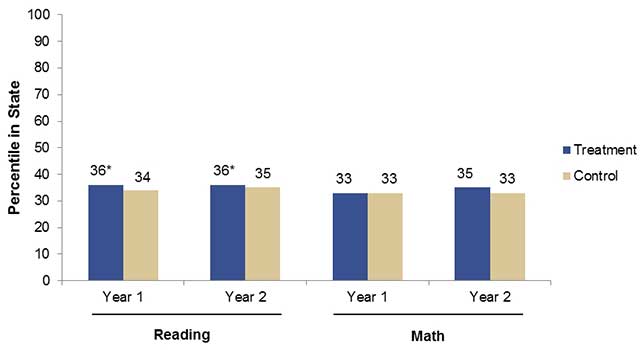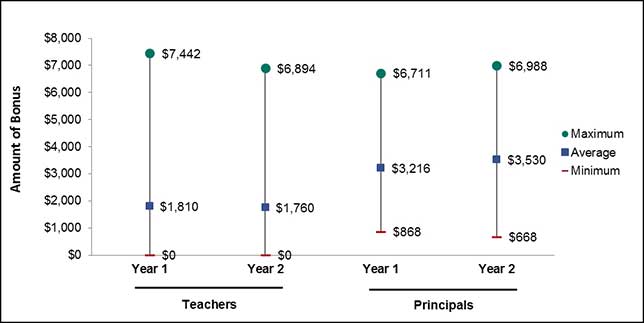Performance Bonuses for Teachers Can Perk Up Student Outcomes
- By Dian Schaffhauser
- 10/01/15
Performance Bonuses for Teachers Can Perk Up Student Outcomes
Paying performance bonuses to teachers works — at least a little bit. However, figuring out who really deserves bonuses within the school or district is challenging. Those are two early findings from a project examining the impact of pay-for-performance among educators.
A federal bill in 2010 created the Teacher Incentive Fund (TIF), grants to support performance-based compensation programs for teachers and principals in high-needs schools. The goal of the funding is to increase the number of high-performing teachers in those schools by rewarding them for improving students' achievement. Bonuses were meant to be "substantial," "hard to earn" and higher for the highest-performing teachers.
Mathematica Policy Research is running a multi-year research project for the United States Department of Education and National Center for Education Evaluation to study the impact of the bonuses on student learning. Schools in 10 districts around the country were assigned by lottery to one of two groups. Each group of schools implemented the same kind of program. They used measures of educator performance that included student achievement and classroom observations. Also, higher performing teachers could take on additional roles, such as becoming mentor teachers. And all educators were provided professional development.
However, the two study groups differed in one respect: The teachers and principals in one group could earn their bonuses based on their performance whereas the other group received automatic 1 percent bonuses.
The researchers found that in those districts where bonuses were paid, student scores on standardized reading tests rose by one percentile point — the equivalent of about three weeks of additional learning. The study also showed positive improvements in math, but those were described as "statistically insignificant."

Improvements in student achievement were seen in reading; math also saw gains, but the results were not statistically significant. Source: National Center for Education Evaluation and Regional Assistance
The research also uncovered other interesting insights.
- Six in 10 teachers earned bonuses, suggesting that they're not as challenging to receive as the program originally intended.
- The average bonus was $1,800, equal to 4 percent of the average teacher salary, but less than the 5 percent minimum recommended in the grant.
- Teachers also underestimated the maximum amount of bonus they might receive. The highest level of bonus in year 1 was $7,442; in year 2 the maximum was $6,894. Yet teachers told researchers that the most they could earn from performance bonuses was only two-fifths the size of the actual maximums awarded.
- Also, a sizable number of educators are still mystified by the key aspects of the program and how to become eligible; however, with time, that understanding is improving. As the research report noted, in schools that offered pay-for-performance bonuses, from year 1 to year 2 the understanding that teachers and principals had about their eligibility improved substantially — from 49 percent to 62 percent for teachers and from 55 percent to 90 percent for principals. However, the report pointed out, "This also means that 38 percent of teachers in the second year still did not understand that they were eligible for a bonus."
"We will continue to follow these districts through the remaining two years of their TIF grant and see if teachers' understanding of their districts' performance-bonus program improves," said Alison Wellington, the study's project director, in a prepared statement. "We'll also look at whether offering performance bonuses continues to improve student achievement."

Teacher performance bonus levels. Source: National Center for Education Evaluation and Regional Assistance
Summaries and related materials are available on the Mathematica-MPR site here. The full report is on the National Center for Education Evaluation and Regional Assistance website here.
About the Author
Dian Schaffhauser is a former senior contributing editor for 1105 Media's education publications THE Journal, Campus Technology and Spaces4Learning.